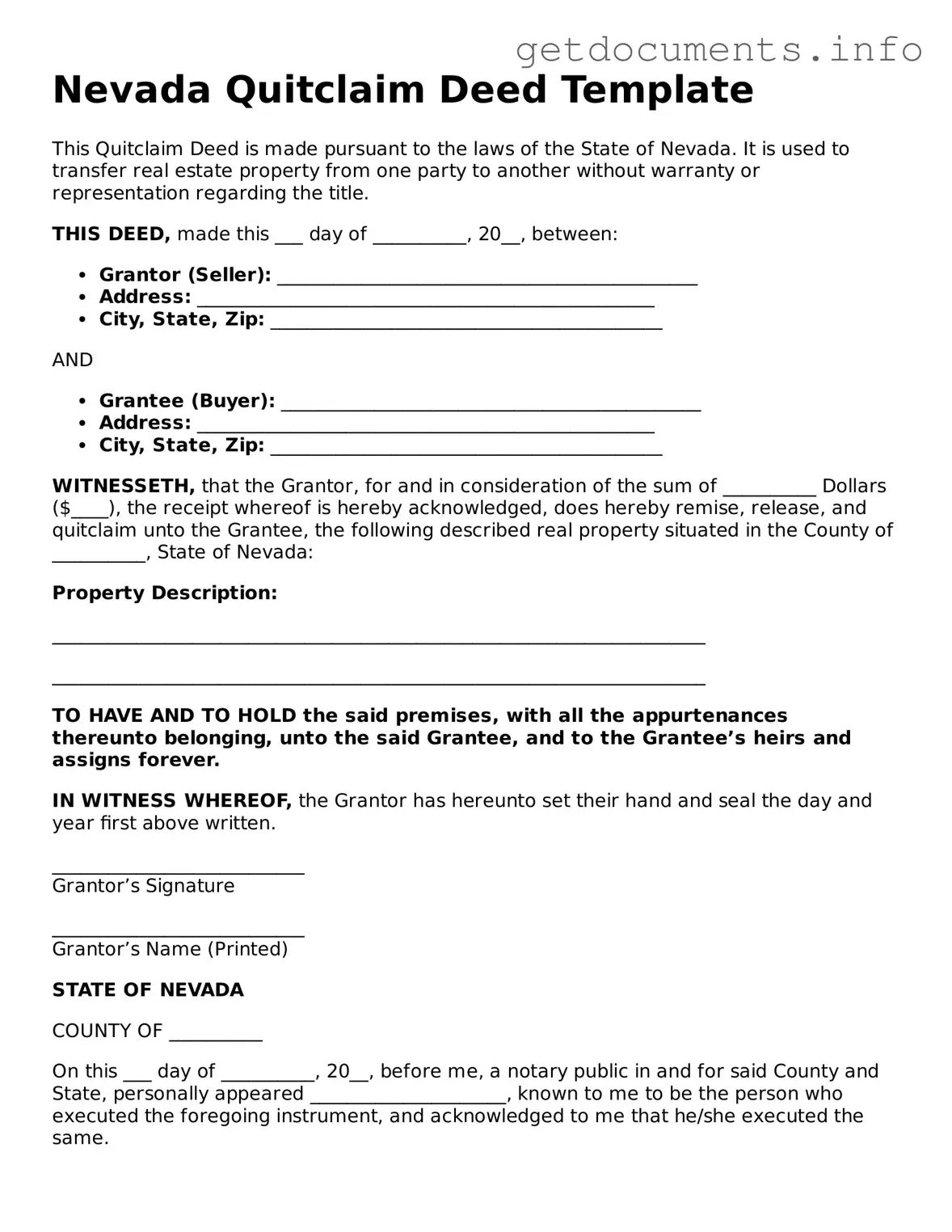Free Quitclaim Deed Template for Nevada
A Nevada Quitclaim Deed is a legal document used to transfer ownership of real property from one party to another without any warranties or guarantees regarding the title. This form is often utilized in situations where the parties know each other well, such as family transfers or when the property is being transferred as part of a divorce settlement. To ensure a smooth transfer of ownership, it is essential to complete the form accurately; you can begin the process by clicking the button below.
Access Quitclaim Deed Editor
